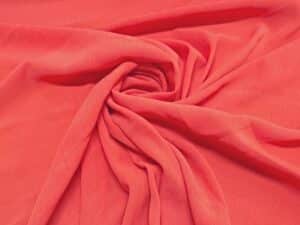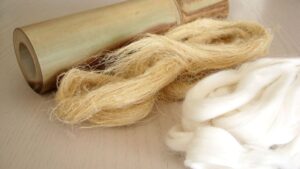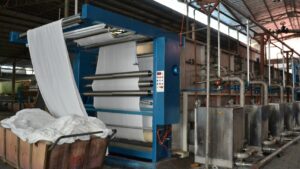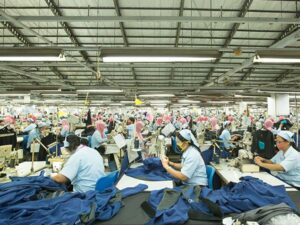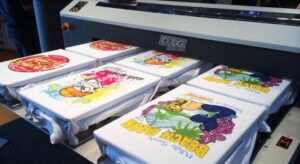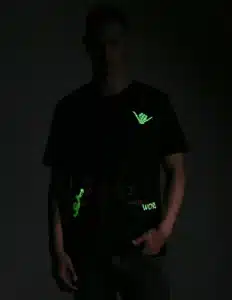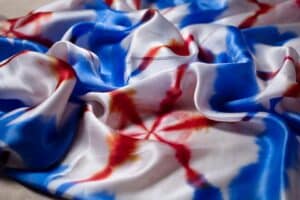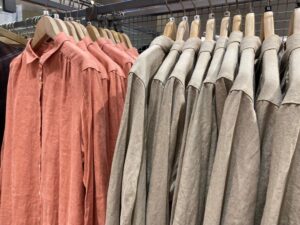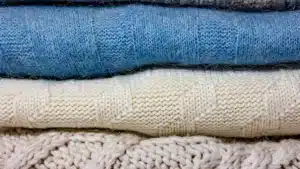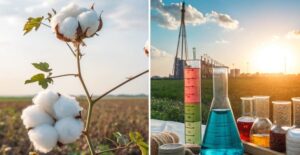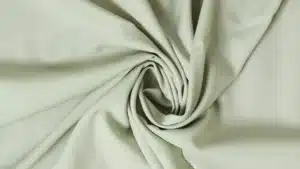
In recent years, sustainability has become a key focus in the fashion and outdoor clothing industries. As consumers grow more environmentally conscious, brands are turning to innovative solutions to reduce their ecological footprint. One such solution is the use of recycled fabrics in clothing manufacturing.
But what exactly are recycled fabrics, and how do they contribute to a more sustainable future? In this article, we’ll explore the concept of recycled fabrics, how they are made, their benefits.
What Are Recycled Fabrics?
Recycled fabrics are materials made from repurposed waste, such as plastic bottles, discarded textiles, or industrial byproducts. These materials are processed and transformed into new fibers, which are then woven or knitted into fabrics for clothing and other products.
Recycled fabrics can be made from a variety of sources, including:
- Post-Consumer Waste1: Materials like plastic bottles, fishing nets, and old clothing.
- Pre-Consumer Waste2: Industrial scraps, fabric offcuts, and unsold inventory.
- Natural Fibers: Recycled cotton or wool from discarded garments.
How Are Recycled Fabrics Made?

The process of creating recycled fabrics varies depending on the source material. Here’s a general overview:
1. Collection and Sorting
- Waste materials are collected and sorted by type (e.g., plastic, cotton, polyester).
- Contaminants like labels, zippers, or dirt are removed.
2. Cleaning and Processing
- Materials are cleaned and broken down into smaller pieces.
- For plastics, this involves shredding and melting into pellets.
- For textiles, fibers are separated and re-spun into yarn.
3. Fiber Production
- The processed materials are transformed into new fibers.
- These fibers are then spun into yarn and woven or knitted into fabric.
4. Fabric Finishing
- The fabric is treated for durability, softness, or water resistance, depending on its intended use.
Types of Recycled Fabrics
Recycled fabrics come in various forms, each with unique properties and applications. Here are some common types:
| Type | Source Material | Properties | Common Uses |
|---|---|---|---|
| Recycled Polyester | Plastic bottles, fishing nets | Durable, quick-drying, lightweight | Jackets, backpacks, activewear |
| Recycled Nylon | Fishing nets, carpet waste | Strong, abrasion-resistant, elastic | Swimwear, outdoor gear |
| Recycled Cotton | Discarded cotton garments | Soft, breathable, biodegradable | T-shirts, casual wear |
| Recycled Wool | Old wool garments | Warm, moisture-wicking, odor-resistant | Sweaters, socks, winter wear |
| Recycled Blends | Mixed textile waste | Combines properties of multiple fibers | Versatile outdoor clothing |
Benefits of Recycled Fabrics
Recycled fabrics offer many advantages for both the environment and consumers. Here’s why they’re gaining popularity in the clothing industry:
1. Environmental Benefits
- Reduces Waste: Diverts plastic and textile waste from landfills and oceans.
- Lowers Carbon Footprint3: Requires less energy and resources compared to virgin materials.
- Conserves Resources: Reduces the need for raw materials like petroleum and cotton.
2. Performance Benefits
- High Quality: Recycled fabrics are just as durable and functional as virgin materials.
- Versatile: Suitable for a wide range of clothing, from jackets to base layers.
- Innovative: Advances in recycling technology have improved the quality and feel of recycled fabrics.
3. Consumer Appeal
- Eco-Friendly: Appeals to environmentally conscious consumers.
- Transparency: Brands using recycled fabrics often promote sustainability, building trust with customers.
Challenges of Using Recycled Fabrics
While recycled fabrics offer many benefits, there are some challenges to consider:
- Limited Availability: High demand for recycled materials can lead to supply shortages.
- Higher Costs: Recycling processes can be more expensive than producing virgin materials.
- Quality Control: Ensuring consistent quality in recycled fabrics can be challenging.
- Consumer Perception: Some consumers may perceive recycled fabrics as lower quality, despite advancements in technology.
How Recycled Fabrics Are Used in Outdoor Clothing
Recycled fabrics are increasingly being used in outdoor clothing due to their durability and sustainability. Here are some common applications:
1. Jackets and Outerwear
- Recycled polyester and nylon are used to create waterproof, windproof, and breathable outer layers.
2. Base Layers and Activewear
- Recycled cotton and wool are ideal for soft, breathable base layers.
3. Accessories
- Backpacks, hats, and gloves made from recycled materials are both functional and eco-friendly.
4. Footwear
- Recycled fabrics are used in the lining, uppers, and even soles of outdoor shoes.
How to Care for Recycled Fabric Clothing
To extend the lifespan of your recycled fabric clothing, follow these care tips:
- Wash on Cold: Use cold water to prevent damage to fibers.
- Avoid Harsh Detergents: Use mild, eco-friendly detergents.
- Air Dry: Avoid high heat in dryers to maintain fabric integrity.
- Repair and Reuse: Mend small tears and repurpose old clothing to reduce waste.
The Future of Recycled Fabrics in Outdoor Clothing
As technology advances, the use of recycled fabrics is expected to grow. Innovations in recycling processes, such as chemical recycling4 and biodegradable fibers5, are making recycled materials more accessible and affordable.
Conclusion
Recycled fabrics are revolutionizing the outdoor clothing industry by combining sustainability with performance. From reducing waste to conserving resources, these materials offer a greener alternative to traditional fabrics without compromising on quality.
At Identity Custom Clothing, we’re committed to creating eco-friendly outdoor clothing that supports a healthier planet. Explore our collection of recycled fabric apparel and join us in making a positive impact on the environment.
-
Post-consumer waste refers to materials discarded after use by consumers, such as plastic bottles or old clothing. ↩
-
Pre-consumer waste includes industrial scraps and unsold inventory. ↩
-
A carbon footprint measures the total greenhouse gas emissions caused by a product or process. ↩
-
Chemical recycling breaks down plastics into their molecular components for reuse. ↩
-
Biodegradable fibers break down naturally, reducing environmental impact. ↩


